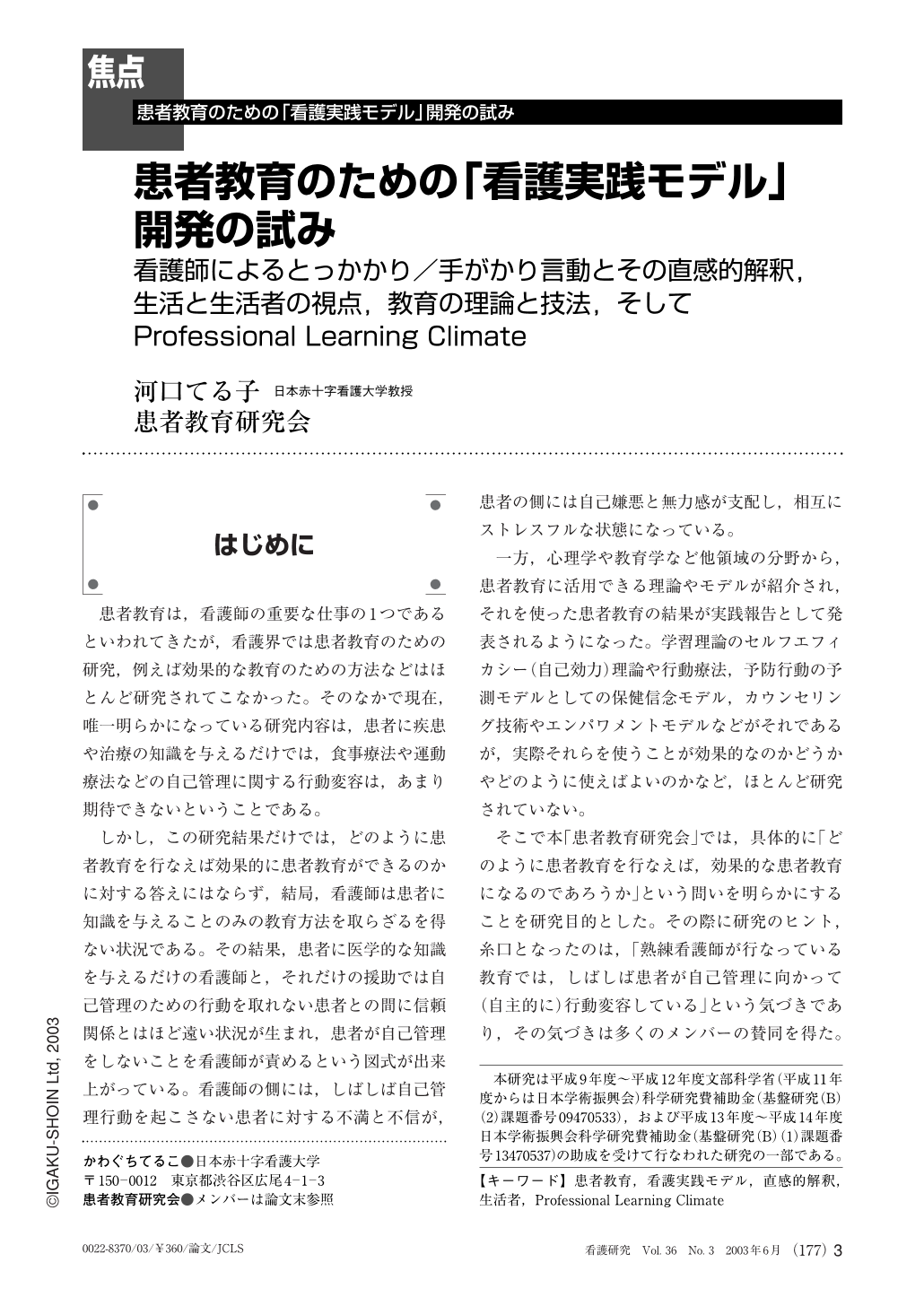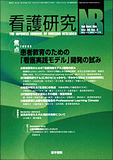Japanese
English
- 有料閲覧
- Abstract 文献概要
- 1ページ目 Look Inside
- サイト内被引用 Cited by
はじめに
患者教育は,看護師の重要な仕事の1つであるといわれてきたが,看護界では患者教育のための研究,例えば効果的な教育のための方法などはほとんど研究されてこなかった。そのなかで現在,唯一明らかになっている研究内容は,患者に疾患や治療の知識を与えるだけでは,食事療法や運動療法などの自己管理に関する行動変容は,あまり期待できないということである。
しかし,この研究結果だけでは,どのように患者教育を行なえば効果的に患者教育ができるのかに対する答えにはならず,結局,看護師は患者に知識を与えることのみの教育方法を取らざるを得ない状況である。その結果,患者に医学的な知識を与えるだけの看護師と,それだけの援助では自己管理のための行動を取れない患者との間に信頼関係とはほど遠い状況が生まれ,患者が自己管理をしないことを看護師が責めるという図式が出来上がっている。看護師の側には,しばしば自己管理行動を起こさない患者に対する不満と不信が,患者の側には自己嫌悪と無力感が支配し,相互にストレスフルな状態になっている。
一方,心理学や教育学など他領域の分野から,患者教育に活用できる理論やモデルが紹介され,それを使った患者教育の結果が実践報告として発表されるようになった。学習理論のセルフエフィカシー(自己効力)理論や行動療法,予防行動の予測モデルとしての保健信念モデル,カウンセリング技術やエンパワメントモデルなどがそれであるが,実際それらを使うことが効果的なのかどうかやどのように使えばよいのかなど,ほとんど研究されていない。
Through reporting and analyzing cases of expert nurses on patient education leading to “modification of behavior heading toward self-management by the patient”, the factors for effective patient education were extracted, and a model was developed.
A total of 152 patient education cases recorded by expert nurses were analyzed by 49 nursing researchers and clinical nurses. Currently 21 researchers are participating in the research. Each session was analyzed by a minimum of 5, a maximum of 20 and on average 11 researchers. The research period was 8.5 years (July 1994 to April 2003). In the initial inductive analyses, researchers and clinical nursing supervisors conducted analyses through discussions based on their own clinical experience, educational cases, previous research and learning theory. Inductive and deductive analyses were conducted alternately.
As factors for effective patient education, cueing remarks and actions, and their intuitional interpretation, “knowledge and skills concerning the living individual”, “knowledge and skills concerning diseases and treatments”, “knowledge and skills concerning educational methods”, and “Professional Learning Climate second version” were extracted. By analyzing the interrelationship between factors, a “Nursing Practice Model” for patient education was developed. Applying this model to patient education cases revealed a good level of validity, and the model was evaluated as useful.

Copyright © 2003, Igaku-Shoin Ltd. All rights reserved.


